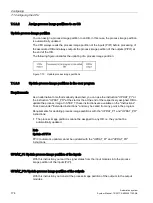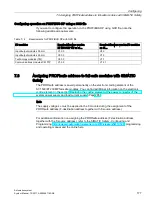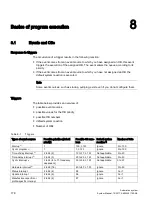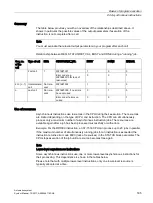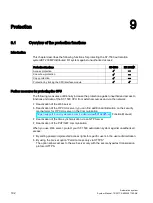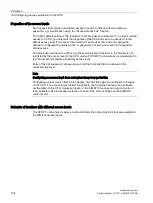
Basics of program execution
8.3 Asynchronous instructions
Automation system
182
System Manual, 12/2017, A5E03461182-AE
8.3
Asynchronous instructions
Difference between synchronous and asynchronous instructions
Program execution makes a distinction between synchronous and asynchronous
instructions.
The "synchronous" and "asynchronous" properties relate to the temporal relationship
between the call and execution of the instruction.
The following applies to synchronous instructions: When the call of a synchronous instruction
is complete, execution of the instruction is also complete.
This is different in the case of asynchronous instructions: When the call of an asynchronous
instruction is complete, execution of the asynchronous instruction is not necessarily
complete yet. This means the execution of an asynchronous instruction can extend over
multiple calls. The CPU processes asynchronous instructions in parallel with the cyclic user
program. Asynchronous instructions generate jobs in the CPU for their processing.
Asynchronous instructions are usually instructions for transferring data (data records for
modules, communication data, diagnostic data, etc.).
Processing of asynchronous instructions
The figure below shows the difference between the processing of an asynchronous
instruction and a synchronous instruction. In this figure the CPU calls the asynchronous
instruction five times before its execution is complete, e.g. a data record has been
completely transferred.
①
First call of the asynchronous instruction, start of execution
②
Intermediate call of the asynchronous instruction, execution continues
③
Last call of the asynchronous instruction, completion of execution
④
The synchronous instruction is completely executed at each call
Duration of complete execution
Figure 8-1
Difference between asynchronous and synchronous instructions
Содержание Simatic S7-1500/ET 200MP
Страница 1: ......







